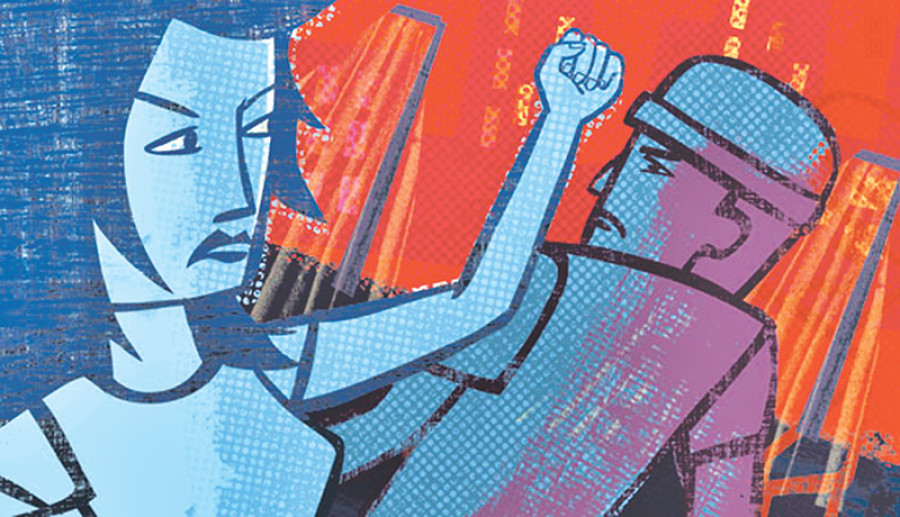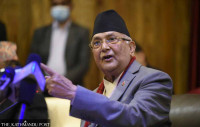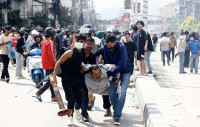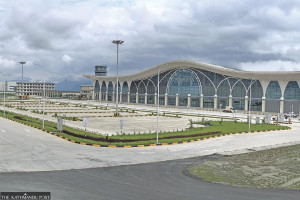Opinion
Girls fight back
The theme of the international campaign 16 Days of Activism against Gender-Based Violence Campaign lasting from November 25 to December 10 is ‘Leave No One Behind: End Violence against Women And Girls’.
Giri Bahadur Sunar
The theme of the international campaign 16 Days of Activism against Gender-Based Violence Campaign lasting from November 25 to December 10 is ‘Leave No One Behind: End Violence against Women And Girls’. Gender studies advocate equality between men and women, but special attention has been paid to women to create an equitable and fair society for sustainable development where men, women and other groups like the LGBTIs can participate equally in mainstream development.
Sustainable Development Goal 5 aims to achieve gender equality and empower all women and girls by the end of 2030. Its targets are to end all forms of discrimination against women and girls everywhere and to eliminate all forms of violence against all women and girls in public and private spheres, including trafficking and sexual and other types of exploitation. To this end, governments and international agencies have spent billions, and different tools like awareness campaigns, education, vocational training, credit and saving facilities and reservation in politics, education and the bureaucracy have been used. These efforts helped women to get out of the four walls of their homes and compete in arenas where men’s hegemony has existed for a long time.
Cases of abuse against girls and women are increasing day by day. According to UN reports, one in three women and girls experience violence in their lifetimes. No special attention has been paid to reduce violence against girls and women except for a few legal reformations. Each year, hundreds of girls and women are attacked in our country, some are mugged, some beaten, some raped and some killed. In 2016, seven cases of trafficking, 2,201 cases of domestic violence, 34 witchcraft accusations, 222 cases of polygamy, 242 cases of rape, 94 cases of rape attempts, 37 cases of sexual abuse and 72 cases of women trafficking were reported, according to the Informal Sector Service Centre (Insec). Almost all these women victims had one thing in common: They did not know how to defend themselves against a physical or psychological attack.
Training for self-protection
A feeling of insecurity can be a deterrent for many girls and women to come out of the home and compete in the wider world. It is the responsibility of the government to protect its citizens without any discrimination with regard to sex, caste, colour, ethnicity, disability or region. But is it possible for the government to be present everywhere, 24/7 to provide protection? No, it is not. That is why girls and women need to prepare themselves to fight back by learning self-defence techniques to prevent unwanted attacks and abuse. Girls and women are usually referred to as the weaker sex and are considered to be easy targets. Self-defence is not all about kicking and punching with fancy moves like in the movies. It also means avoiding confrontation and hurting oneself or one’s assailant unless it is necessary.
For the last one decade, I have been providing self-defence training to girls and women. My Women Empowerment Self-Defence training session is divided into two parts. The first part consists of psychological learning and the second part consists of physical learning. I have collected feedback to assess the effectiveness of the training session. Most of the participants (70 percent) reported that they liked the psychological self-defence part more than physical self-defence because they believed that the more they become aware of their circumstances, the better they can avoid physical confrontation. With regard to their confidence level after participating in the training session, about 90 percent reported that they could fight back and protect themselves if someone tries to abuse or rape them. Likewise, 95 percent said that such training was essential to boost the confidence level of girls and women.
A year after the completion of the training session, I contacted the former students in Ramechhap, Nepalgunj, Dharan, Damauli, Bharatpur and Kathmandu informally by telephone. Among them, 90 percent reported that they were feeling safe, supple and stronger after taking part in the Women Empowerment Self-Defence training. They also said that their confidence level was very high in comparison to the past. In response to the question of whether they had encountered any kind of abuse or rape, 60 percent of the participants said that they had not. About 30 percent reported that they had faced different kinds of physical and psychological abuse in public vehicles, school, college, restaurants and public places, and even at home from relatives, friends and street hooligans.
Taking a stand
In Nepal, violence against women often goes unrecorded. Although men too are subjected to violence of different kinds, women are more vulnerable. Women make up more than half of the national population, and they should be empowered to defend themselves during emergencies as there are several effects of violence on women’s reproductive health and future life. Women’s empowerment is a critical aspect of achieving gender equality. It includes increasing women’s sense of self-worth, their decision making power, their access to opportunities and resources, and their power and control over their own life inside and outside the home.
Self-defence training for girls and women is designed to empower girls and women individually by providing technical skills so they can protect themselves from unwanted attacks, whether physical or psychological. Self-defence training is not only about physical training like kicking and punching. Kicking and punching does not work unless girls and women are psychologically empowered. Self-defence training is for physical and psychological empowerment of girls and women. Those who practice self-defence can develop stamina, body balance, speed and overall physical and mental fitness. Girls and women can occupy space equal to that of men in public and private spheres. In order to make this happen, the government, non-governmental organisations and international agencies working in Nepal must help. Let us create a society where every individual can live without fear of physical attacks, abuse, rape or domestic violence.
Sunar is a sociologist and women empowerment self-defence trainer




 7.12°C Kathmandu
7.12°C Kathmandu










